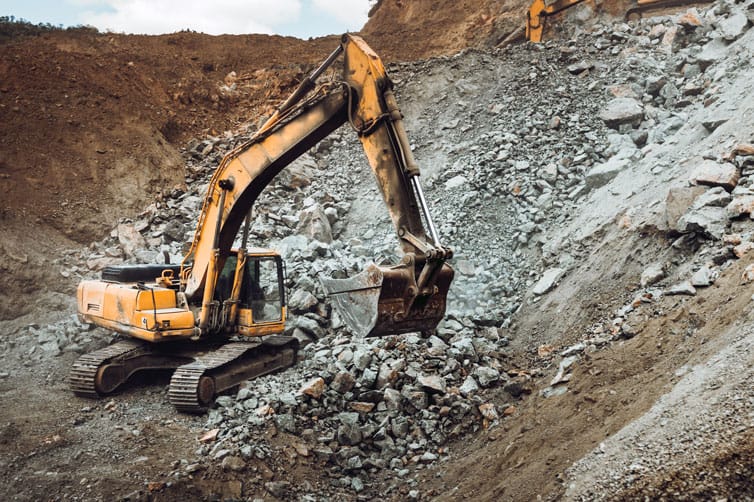Excavation work can be an incredibly rewarding and necessary part of many construction projects. It allows us to uncover hidden treasures, build foundations, and lay the groundwork for future success. But let’s not forget, my friends, that beneath that surface lies a world of potential dangers. So, let’s dive in and explore some of the risks associated with excavation work under 1.5, and of course, I’ll be throwing in some safety recommendations along the way.
First and foremost, my friends, we must acknowledge the risk of cave-ins. Excavating below 1.5 meters can put immense pressure on the surrounding soil, and if proper precautions aren’t taken, it can result in a collapse that could endanger the lives of those working in and around the excavation site. That’s why it’s crucial to always have a competent person on site who can assess the stability of the soil and implement necessary measures, such as shoring, sloping, or benching, to prevent cave-ins.
Another danger we must be aware of is the presence of underground utilities. When we’re digging deep, we never know what’s hiding below. Underground utility lines, such as gas, water, or electrical cables, can pose a serious risk if accidentally hit or damaged during excavation work. That’s why it’s essential to contact the relevant utility companies and have them mark the locations of their lines before any digging begins. Remember, my friends, always call before you dig!
Now, let’s talk about something that often gets overlooked: proper protective equipment. When you’re down in the trenches, my friends, you need to suit up for safety. Hard hats, high-visibility vests, steel-toed boots, and protective eyewear are just some of the gear you should never skimp on. It’s not about looking cool; it’s about staying safe and protecting yourself from falling debris, hazardous materials, or any unexpected accidents that may occur on the job.
Speaking of unexpected accidents, it’s crucial to have an emergency action plan in place. You never know when a medical emergency, a gas leak, or any other unforeseen incident might occur. Make sure everyone on the team is aware of the emergency procedures, including evacuation routes, assembly points, and the location of first aid kits. Preparation is key, my friends, so don’t leave safety to chance.
Now, let’s switch gears and talk about excavation equipment. These powerful machines can make our jobs easier and more efficient, but they can also be potential hazards if not operated correctly. Proper training and certification for equipment operators are non-negotiable. It’s essential to understand the machine’s capabilities, limitations, and safety features before hopping in the driver’s seat. Remember, my friends, safety starts with knowledge.
Finally, my friends, let’s not forget about the power of communication. Clear and effective communication among the entire team is paramount in excavation work. Everyone needs to be on the same page, aware of their roles and responsibilities, and able to communicate any potential hazards or concerns. Regular toolbox talks, safety meetings, and constant vigilance can help create a culture of safety where everyone looks out for one another.
In conclusion, my friends, excavation work under 1.5 can be dangerous if not approached with caution. The risks of cave-ins, underground utilities, and other potential hazards are real, but with the right safety measures and a proactive mindset, we can ensure that everyone goes home safe at the end of the day.
Remember, my friends, safety should never be compromised. It’s not just a box to check or a formality to fulfil; it’s a mindset that should be ingrained in everything we do. When it comes to excavation work under 1.5, we must prioritise safety at every step of the process.
So, before you grab that shovel or start up that excavator, take a moment to assess the potential dangers. Are you prepared to handle the risks that come with working below 1.5 meters? Have you taken the necessary precautions to prevent cave-ins? Are you aware of the location of underground utilities? These are the questions we must ask ourselves to ensure that we’re putting safety first.
And my friends, safety doesn’t stop at personal protective equipment and emergency plans. It’s an ongoing commitment to continuous improvement. Regular inspections of excavation sites, frequent safety audits, and open lines of communication are vital to maintaining a safe working environment. Encourage your team members to speak up if they notice any potential hazards or have ideas for improving safety protocols. Remember, we’re all in this together.
Now, I want to leave you with a powerful reminder, my friends. Safety isn’t just about compliance; it’s about caring for one another. Every person on your team has loved ones who are counting on them to come home safe and sound. By prioritising safety in excavation work under 1.5, you’re not just protecting yourself; you’re protecting your colleagues, your friends, and your family.
So, my friends, let’s take a moment to reflect on the importance of safety in excavation work under 1.5. Let’s be proactive, vigilant, and committed to creating a culture of safety in everything we do. Remember, accidents can be prevented, lives can be saved, and success can be achieved when we put safety first.
Now, go out there, my friends, and dig deep with a safety-first mindset. You have the power to make a difference, to protect lives, and to set an example for others in the industry. Stay safe, stay focused, and keep pushing forward. Excavation work under 1.5 may have its dangers, but with the right knowledge, preparation, and mindset, we can conquer any challenge that comes our way.
Stay safe, my friends, and until next time, keep digging and keep thriving!
Regards,

![]()






